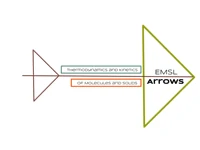NWChem: Open Source High-Performance Computational Chemistry¶
The NWChem software contains computational chemistry tools that are scalable both in their ability to efficiently treat large scientific problems, and in their use of available computing resources from high-performance parallel supercomputers to conventional workstation clusters.
NWChem can handle:

- Biomolecules, nanostructures, and solid-state
- From quantum to classical, and all combinations
- Ground and excited-states
- Gaussian basis functions or plane-waves
- Scaling from one to thousands of processors
- Properties and relativistic effects
NWChem is actively developed by a consortium of developers and maintained by
The Environmental Molecular Sciences Laboratory (EMSL) located at the Pacific
Northwest National Laboratory (PNNL) in Washington State. Researchers interested
in contributing to NWChem should review
the Developers page. The
code is distributed as open-source under the terms of the Educational
Community License
version 2.0 (ECL 2.0).
The NWChem development strategy is focused on providing new and essential scientific capabilities to its users in the areas of kinetics and dynamics of chemical transformations, chemistry at interfaces and in the condensed phase, and enabling innovative and integrated research at EMSL. At the same time continued development is needed to enable NWChem to effectively utilize architectures of tens of petaflops and beyond.
Latest NWChem release¶
NWChem version 7.2.2 is the latest release available for download from the link https://github.com/nwchemgit/nwchem/releases.
EMSL Arrows¶

Are you just learning how to use NWChem and would like to have an easy way to generate input decks, check your output decks against a large database of calculations, perform simple thermochemistry calculations, calculate the NMR and IR spectra of a modest size molecule, or just try out nwchem before installing it? EMSL Arrows scientific service can help. A web api to EMSL Arrows is now available for alpha testing.
For more information see EMSL Arrows - an easier way to use nwchem
NWChem Documentation¶
NWChem Citation¶
Please cite the following reference when publishing results obtained with NWChem:
E. Aprà, E. J. Bylaska, W. A. de Jong, N. Govind, K. Kowalski, T. P. Straatsma, M. Valiev, H. J. J. van Dam, Y. Alexeev, J. Anchell, V. Anisimov, F. W. Aquino, R. Atta-Fynn, J. Autschbach, N. P. Bauman, J. C. Becca, D. E. Bernholdt, K. Bhaskaran-Nair, S. Bogatko, P. Borowski, J. Boschen, J. Brabec, A. Bruner, E. Cauët, Y. Chen, G. N. Chuev, C. J. Cramer, J. Daily, M. J. O. Deegan, T. H. Dunning Jr., M. Dupuis, K. G. Dyall, G. I. Fann, S. A. Fischer, A. Fonari, H. Früchtl, L. Gagliardi, J. Garza, N. Gawande, S. Ghosh, K. Glaesemann, A. W. Götz, J. Hammond, V. Helms, E. D. Hermes, K. Hirao, S. Hirata, M. Jacquelin, L. Jensen, B. G. Johnson, H. Jónsson, R. A. Kendall, M. Klemm, R. Kobayashi, V. Konkov, S. Krishnamoorthy, M. Krishnan, Z. Lin, R. D. Lins, R. J. Littlefield, A. J. Logsdail, K. Lopata, W. Ma, A. V. Marenich, J. Martin del Campo, D. Mejia-Rodriguez, J. E. Moore, J. M. Mullin, T. Nakajima, D. R. Nascimento, J. A. Nichols, P. J. Nichols, J. Nieplocha, A. Otero-de-la-Roza, B. Palmer, A. Panyala, T. Pirojsirikul, B. Peng, R. Peverati, J. Pittner, L. Pollack, R. M. Richard, P. Sadayappan, G. C. Schatz, W. A. Shelton, D. W. Silverstein, D. M. A. Smith, T. A. Soares, D. Song, M. Swart, H. L. Taylor, G. S. Thomas, V. Tipparaju, D. G. Truhlar, K. Tsemekhman, T. Van Voorhis, Á. Vázquez-Mayagoitia, P. Verma, O. Villa, A. Vishnu, K. D. Vogiatzis, D. Wang, J. H. Weare, M. J. Williamson, T. L. Windus, K. Woliński, A. T. Wong, Q. Wu, C. Yang, Q. Yu, M. Zacharias, Z. Zhang, Y. Zhao, and R. J. Harrison, “NWChem: Past, present, and future”, The Journal of Chemical Physics 152, 184102 (2020). DOI: 10.1063/5.0004997